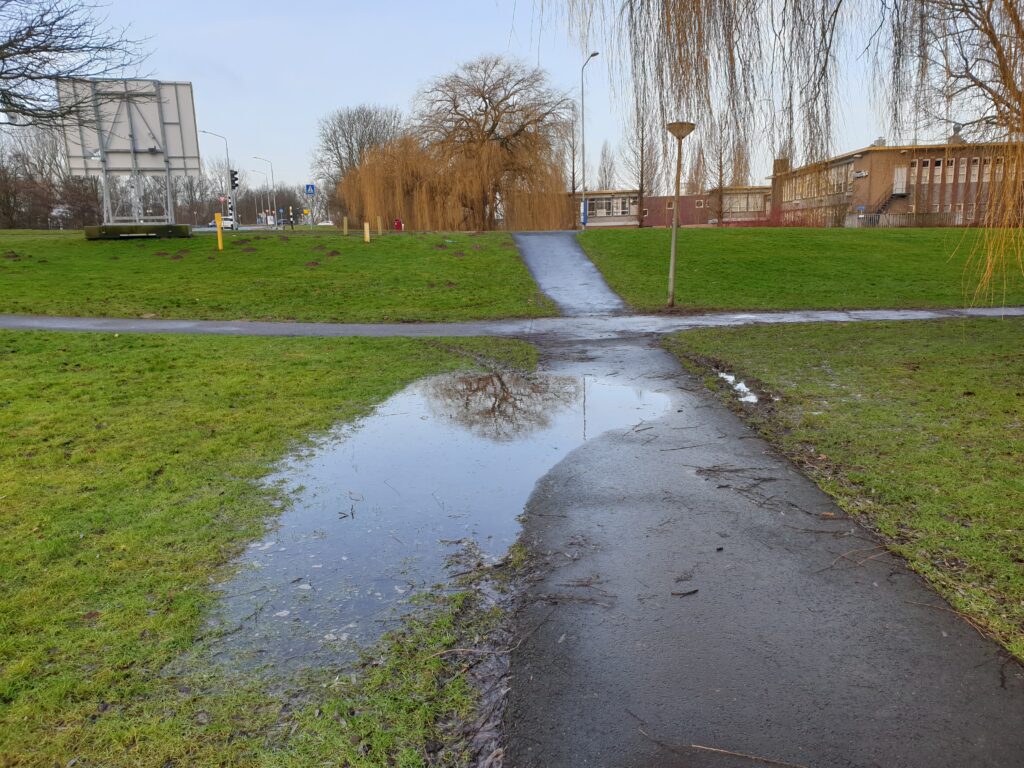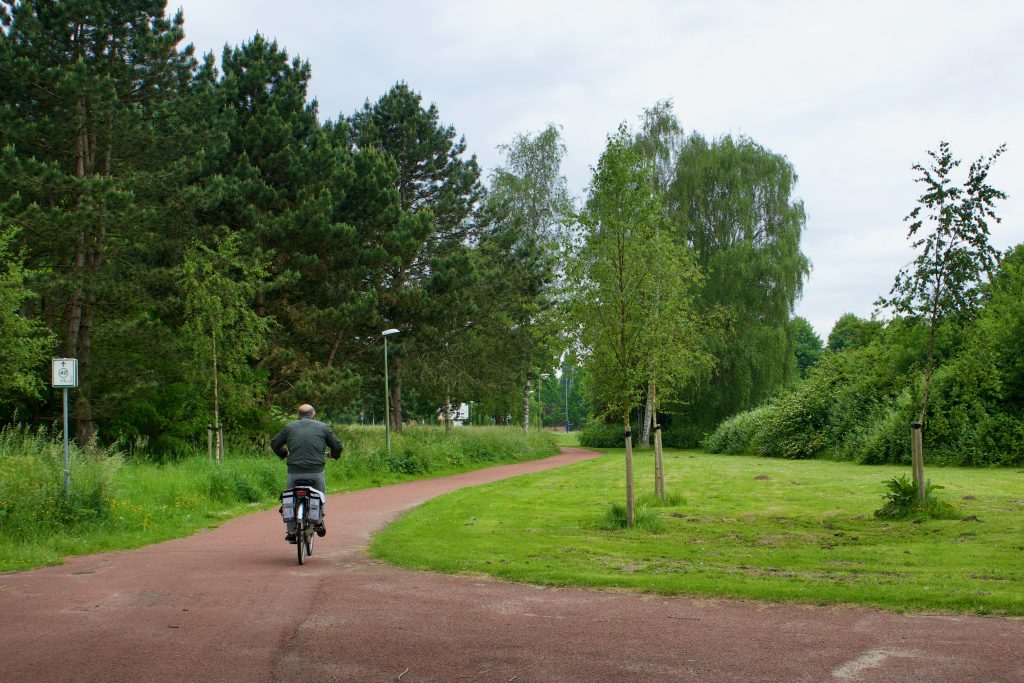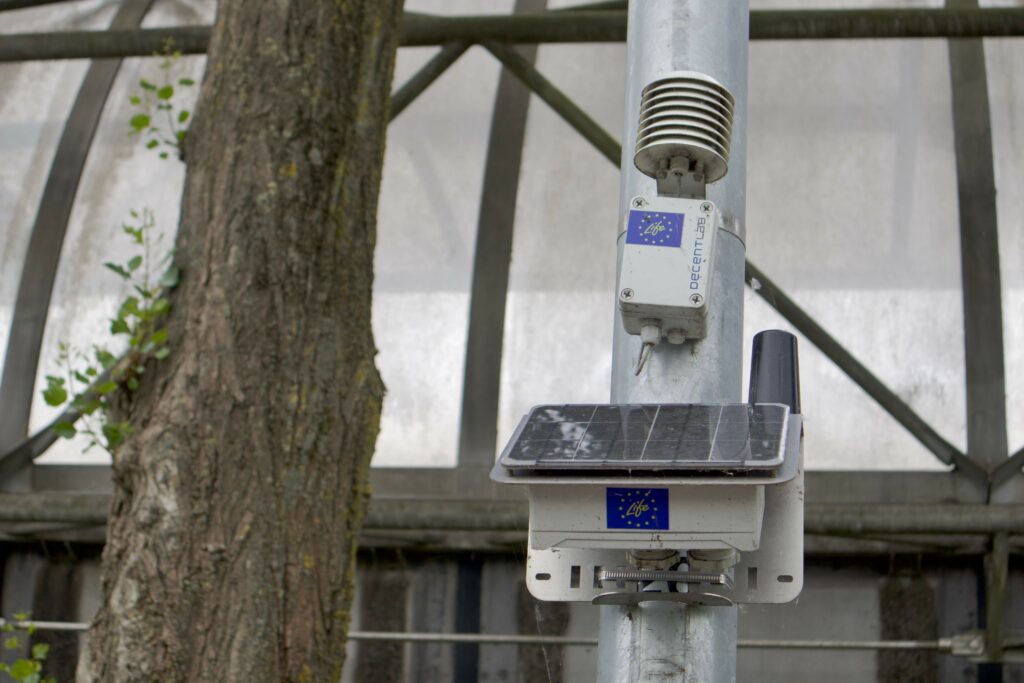Engaging Locals, Empowering Solutions: The Role of Citizen Science in Climate Adaptation
Sandra de Vries, founder of PULSAQUA, is an expert in citizen science for sustainability, focusing her efforts on advancing the SDGs together with local communities. As a contributor to LIFE CRITICAL, in this interview she shares the importance of citizen science and the role it plays in climate adaptation initiatives.
Tell us a bit about yourself and your work?
With a background in hydrology and water resources management, I’m based in Rotterdam, the second largest city in the Netherlands. Here in the Netherlands, we’ve been working more and more towards citizen science in the water and climate adaptation sector.
About four years ago, I founded PULSAQUA to consult for organisations, NGOs, knowledge institutes, and governments on how to implement citizen science. Our efforts have centred on empowering communities to actively participate in scientific endeavours, contributing their invaluable knowledge and insights. It is this convergence of my expertise and the pressing need for citizen engagement that drives my enthusiasm for the work we undertake at PULSAQUA.
Why is citizen science such an important part of climate adaptation projects like LIFE CRITICAL?
The integration of citizen science into climate adaptation projects, such as LIFE CRITICAL, holds immense significance for two key reasons.
Firstly, citizen science provides invaluable scientific and informational value by enabling the collection of extensive data on both local and global scales. This approach amplifies the data’s viability and expands its spatial and temporal reach. By incorporating citizen science methods, it becomes possible to obtain a wealth of measurements that meticulously track the effects of climate adaptation measures. This, in turn, helps gauge the efficacy of these measures, such as their impact on temperature reduction or prevention of local flooding. The comprehensive scope of citizen science empowers us to effectively assess the outcomes of climate adaptation initiatives.
Secondly, climate adaptation itself remains a subject of debate, with concerns raised about the allocation of resources. Given the relative novelty of climate measures, their effectiveness remains uncertain. Collaborating with local residents, who directly experience the challenges posed by climate change, not only fosters understanding of its impacts but also ensures that the government’s investment in these measures is justified. Through citizen science, communities gain insights into climate change, comprehend its consequences, and actively participate in shaping their local environments to align with future climate conditions. This dual approach of data acquisition and fostering ownership and awareness among inhabitants contributes to a holistic approach to climate adaptation.
Why are you pursuing citizen science in Wielwijk? Why citizen science, and why Wielwijk?
The pursuit of citizen science in Wielwijk stems from a combination of factors. Firstly, the area itself was in need of significant changes, particularly in addressing pollution and traffic-related disturbances. The team saw the opportunity this presented – that if they were going to make changes, they should execute these changes effectively and integrate climate adaptivity. This involved reducing heat stress, enhancing water storage capacity during intense rainfall, and ensuring the park’s usability shortly after such events. Wielwijk was specifically chosen due to its existing potential for transformation and the need for improvement in its predominantly grey landscape.
Secondly, Wielwijk is recognised as a neighbourhood with unique challenges in terms of community engagement and has faced a certain level of apathy or opposition among its inhabitants.

By engaging the community through citizen science, we aim to bridge this gap and foster active participation in shaping their neighbourhood. Citizen science presents an opportunity to co-create their environment and overcome past disappointments. It offers valuable insights that can empower residents to play a significant role in driving positive change.
Moreover, the measures being implemented in Wielwijk are on a relatively small scale. This scale makes it particularly intriguing to involve citizens as high-density observations and measurements become crucial. By closely involving the community in citizen science initiatives, we can gather detailed data and understand the subtle yet impactful effects of these measures. Wielwijk thus emerges as an ideal starting point due to its potential for transformation, the need for community inclusion, and the intricate nature of the changes being implemented.
What communication modes do you use to meet residents?
When it comes to communication with residents, we face the challenge of reaching out effectively at a local scale and garnering interest in climate change and citizen science initiatives. Traditional communication channels like social media or city newspapers were deemed too widespread for our specific target audience. Convincing people to invest their time and volunteer for something they may not believe in or find interesting posed a significant question for our project.
To address this, we decided to take a more personal approach. We went door-to-door, distributing flyers and engaging directly with residents living near the locations where the adaptation measures were being implemented, such as the park and the adapted streets. A small team of three of us spent half a day visiting every household, explaining the project’s purpose, its significance, and why it could be fun and interesting for them to participate. We provided information about how they could get involved and encouraged them to subscribe if interested. For those who were not at home during our visit, we took note and a team member went back to ensure each resident received the information in person.
Some residents expressed immediate interest and provided their email addresses on the spot, while others subscribed later after giving it some thought. Importantly, we made it clear that the first meeting would not commit them to participation; they had the freedom to decide after attending the initial information session.
This approach yielded positive results, as we now have a group of around 20 volunteers with whom we will begin conducting various measurements. This is just the initial phase, and we believe the group will grow organically from this foundation. Additionally, we are planning to place QR codes in the area that share project information and opportunities to participate. People passing by, walking their dogs, or enjoying the surroundings can scan the code, take pictures, and submit them as observations for the project. We hope that this interactive element will further pique their interest and encourage them to join the core group.
While the success of this outreach strategy is yet to be fully realised, we remain optimistic about its potential to engage and involve the community in our citizen science initiatives.
How do you build relationships with residents to establish a reliable base of volunteers?
We are currently organising a training session where we not only provide manuals for the different measurements but also create opportunities for the participants to connect with one another. During this session, we will actively seek their input and involvement in shaping the project’s future. For instance, when determining the placement of observation points for capturing flooded areas, we value their local knowledge and insights. We understand that they know their surroundings best, so involving them in decision-making fosters a sense of ownership and collaboration.
In addition to seeking their input, we also encourage residents to suggest additional measurements they believe are relevant. This openness to incorporating their ideas allows us to explore new avenues and expand the scope of the project. By testing these suggested measurements with willing participants, we can assess their viability and potentially invite others to join those measurements if successful. This approach not only empowers residents to contribute actively but also keeps the project dynamic and responsive to their needs.

To maintain engagement, we plan a measurement day in September where more people will participate, and we introduce new measurements that are conducted once a year. This helps to sustain their interest and ensures ongoing involvement in the project. Furthermore, we aim to create a community platform, an online space where participants can ask questions, share their observations, and even interact with one another. This platform not only facilitates communication between residents and researchers but also encourages socialisation within the community.
Lastly, we emphasise personal connections and engagement with key stakeholders, including the project leader from the municipality. By involving the residents in discussions with the project leader, they gain a deeper understanding of the municipality’s perspective and can establish a more meaningful interaction. This ongoing connection between residents, researchers, and the municipality helps foster a sense of community and ensures the sustainability of the project.
Let’s highlight this personalised citizen science approach where you let volunteers choose the measurements they want to work on – can you tell us a bit more about this, why you chose this method, and how it impacts the commitment of volunteers to see this project through to the end?
Our personalised citizen science approach was adopted for a few reasons. Firstly, we wanted to promote co-creation and collaboration with the volunteers. Initially, we aimed for a complete co-creation process, but we realised that many residents were unsure about what options were available or what they could measure without a technical background. Therefore, we took the initiative to show them the important measurements and provided them with materials and proposed methods for those measurements. This allowed us to guide them in selecting measurements that would provide valuable information for the project.
Additionally, we engaged in conversations with the residents to understand their perspectives and the unique observations they had regarding the area. As many have been living there for decades, they have a long memory and can highlight changes we wouldn’t notice on our own. For example, one resident mentioned the decrease in the number of frogs over the years and wondered if the adaptation measures could attract them back. Another resident noticed that the water clarity decreased with higher water levels and wanted to track the changes in clarity alongside water level measurements. We are now working with this resident to try out different methods and determine the most suitable one for the area.
By allowing volunteers to choose measurements that interest them and align with their observations, we create a sense of ownership and dedication among the participants. They feel motivated and engaged because they are contributing to answering questions they genuinely care about. This personalised approach combines top-down guidance with bottom-up input, establishing a co-creative environment where everyone’s input is valued.
It’s important to note that there is no one-size-fits-all approach to citizen science. The methods and engagement strategies must be tailored to the specific context, demographics, and goals of the project. Factors such as the neighbourhood, the type of climate adaptation measures being implemented, and the desired outcomes all influence how the project should be structured. It’s crucial to assess these factors and adapt the approach accordingly.
We continuously learn from case studies and lessons learned, but it’s essential to recognise that each location and project is unique. While we draw on existing methods and designs for measurements and observations, we remain flexible and responsive to the specific needs and circumstances of the project at hand.
What are your expectations for the coming year with LIFE CRITICAL?
As we move forward, I am really looking forward to the upcoming training session where we will introduce the core group to the first set of measurements. This will also allow us to plan the next phase, which involves installing QR codes in specific locations for observations.
Additionally, in September, we have a measurement day scheduled, and I’m excited to see more people getting involved and the data starting to flow in. I anticipate that the coming months will involve some trial and error as we identify and address any issues or areas of confusion. It’s an exciting part of the process and allows us to continuously improve.

If someone tuning into this wanted to set up a citizen science initiative in their city, what advice would you give them?
Based on our experience in Wielwijk and as a whole, here are some lessons that could be applied in other cities looking to engage their citizens in climate adaptation through citizen science initiatives:
Seek expertise: It’s important to have someone with experience in citizen science involved in the project. Citizen science is different from general participation, and having technical knowledge about the measurements and observations is crucial. This person can guide and advise the participants effectively.
Consider an intermediary role: If possible, it can be beneficial to have an intermediary organisation or partner involved, especially if you’re not from the government or municipality. This can help establish trust and create a more open and constructive dialogue between the citizens and the authorities. It allows for a fresh perspective and avoids getting caught up in discussions about past failures.
Collaborate and learn from others: Engage with other cities or organisations that have implemented similar citizen science projects. Sharing experiences, knowledge, and best practices can help you avoid pitfalls and learn from successful approaches.
Ensure data utility and feedback: Make sure that the data collected through citizen science is genuinely useful and used in decision-making processes. Participants should be informed about how their data will be utilised and given feedback on the project’s findings. Failing to use the data or not providing feedback can lead to participants feeling deceived and undermine their commitment.
Manage expectations: Be clear from the start about the purpose and goals of the citizen science initiative and emphasise how it contributes to answering specific questions or addressing climate adaptation challenges. Managing expectations and being transparent about the project’s intentions can help build trust and avoid disappointment.
Overall, citizen science initiatives should be driven by a genuine need to address specific questions or challenges, with a clear plan for utilising the collected data. By incorporating these lessons, cities can create effective and meaningful citizen science projects for climate adaptation.
With the impacts of the climate crisis becoming more tangible each year (through floods, droughts, wildfires, and other extreme weather events for example) how do you see citizen science fitting into the solutions?
In addition to the growing climate crisis, the advancements in technology like smartphones offer tremendous potential for citizen science. With smartphones, we have the means to interact online, use local sensors, capture photos, and even record audio frequencies for observations and measurements.
The rate of technological progress in this regard may be outpacing the growth of the climate crisis itself, presenting exciting opportunities for collaborative measurement efforts. Citizen science aligns with these possibilities and is particularly relevant because the effects of the climate crisis directly impact individuals and communities. It is not just an abstract issue, but a problem that affects citizens personally. By participating in citizen science initiatives, individuals can take ownership and seek to improve their own living environments, as well as the natural areas they care about, driven by their own motivations and interests.
Overall, citizen science offers a bottom-up approach to climate solutions, enabling widespread participation and leveraging the power of collective action. It combines scientific expertise with local knowledge and engagement, creating a collaborative framework for addressing the challenges posed by the climate crisis.
Curious to learn more about the intersection between citizens science and climate adaptation? Get in touch!
